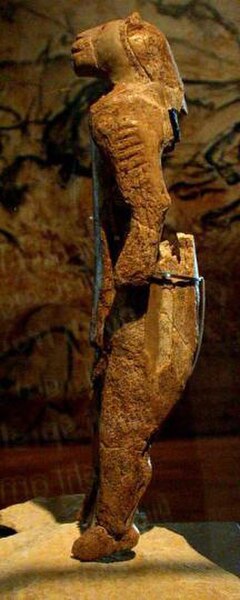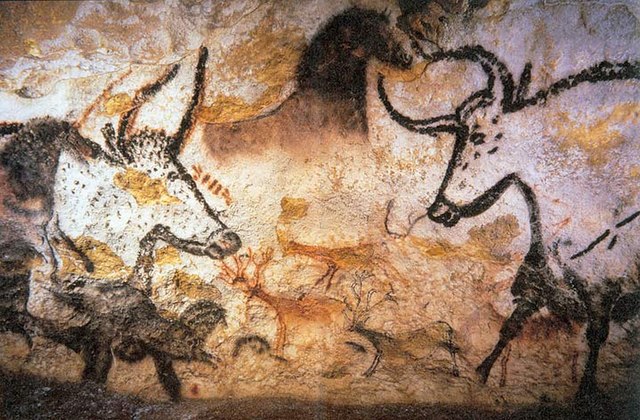Evolution of human intelligence
The evolution of human intelligence is closely tied to the evolution of the human brain and to the origin of language. The timeline of human evolution spans approximately seven million years, from the separation of the genus Pan until the emergence of behavioral modernity by 50,000 years ago. The first three million years of this timeline concern Sahelanthropus, the following two million concern Australopithecus and the final two million span the history of the genus Homo in the Paleolithic era.
Chimpanzee mother and baby
Stone tools from the Paleolithic Period, also known as the Stone Age, are indicative of cognitive advancements throughout human evolutionary history.
"The Lion-man", found in the Hohlenstein-Stadel cave of Germany's Swabian Alb and dated to 40,000 years ago, is associated with the Aurignacian culture and is the oldest known anthropomorphic animal figurine in the world.
Behavioral modernity is a suite of behavioral and cognitive traits believed to distinguish current Homo sapiens from other anatomically modern humans, hominins, and primates. Most scholars agree that modern human behavior can be characterized by abstract thinking, planning depth, symbolic behavior, music and dance, exploitation of large game, and blade technology, among others.
Underlying these behaviors and technological innovations are cognitive and cultural foundations that have been documented experimentally and ethnographically by evolutionary and cultural anthropologists. These human universal patterns include cumulative cultural adaptation, social norms, language, and extensive help and cooperation beyond close kin.
Upper Paleolithic (16,000-year-old) cave painting from Lascaux cave in France
A Māori man performing haka, a ceremonial dance. He is displaying several hallmarks of behavioral modernity including the use of jewelry, application of body paint, music and dance, and symbolic behavior.





